We had mostly great weather the whole time we were in England. Lots of sunshine and I even got sunburned a bit, which is rare since I don’t sit in the sun very much. After we left the boat back in Leighton Buzzard, we took the train to Salisbury. I think of England as being so small and populated that it’s coast-to-coast towns but there sure is a lot of beautiful landscape and farmland everywhere. Salisbury is a lovely old medieval town with a great deal of ancient architecture. All you have to do is look up above the first floor to see that much of the town probably looks the same as it did a couple of hundred years ago. There is a very picturesque river walk and lots of little boutiques in the city center if you’re inclined to shop.
We stayed at a no-frills City lodge just outside the city center, close enough to walk in for breakfast each morning at Carwardine’s (where we learned we could request no beans for the traditional English breakfasts if we didn’t want baked beans slathered all over the place).
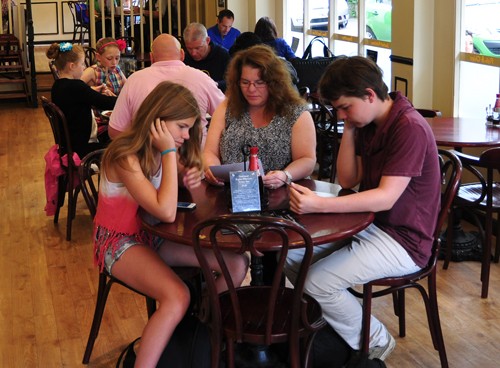
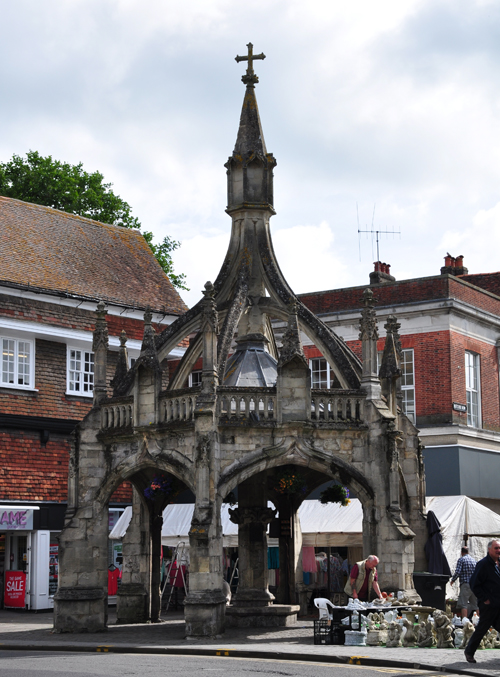
The Poultry Cross, one of the medieval market crosses still in use on market days
One of the reasons we decided to go to Salisbury is because it’s quite close to Stonehenge. We had originally thought of going to Stratford upon Avon, but we couldn’t find accommodations there for the days we wanted (summer is full of Shakespeare festivals, natch’). I found information about a hop-on, hop-off bus tour that visited Stonehenge, Old Sarum and the Salisbury Cathedral, so we decided that sounded perfect for a 2-night, 1 full day stay. I didn’t read that much about Old Sarum beforehand, just that it was some sort of Roman earthworks or fortification or something. But it turned out to be just as great as Stonehenge for quite different reasons.
The bus tour was excellent; about 30 minutes out into the lovely countryside to reach Stonehenge, while the recorded commentary gave us lots of interesting facts and information about Salisbury, the surroundings and Stonehenge itself. A new giant visitor center and museum is under construction close to the site, scheduled to be opened at the end of this year, and I was surprised to learn that there used to be a lot of buildings quite close to the actual site, but they were all torn down and the land returned to agriculture by the 1930s. I thought we would we see Stonehenge from quite far off, as it’s on a hill in the middle of a bare plain, but surprisingly we didn’t see it until we were almost on top of it. Another nice thing about being on the bus tour was getting to jump the extremely long line of people waiting to get in. We were fast-tracked right through to pick up individual audio guides and head up on the hill.
Stonehenge is massive. The scale is actually hard to fathom because you are not allowed to get very close. People haven’t been allowed to walk among the stones since 1977 due to serious erosion and vandalism. We learned that in medieval times a smithy nearby used to sell hammers to visitors so they could chip off bits to take home with them for souvenirs!
Walking around it a long procession of other tourists felt very weird and very wrong somehow. There is nothing around but fields and the wide-open sky dwarfed the feeling of the stones. Originally, before and when the monument was built, the entire area was covered with forest, and it’s quite possible it was enclosed in forest for years.
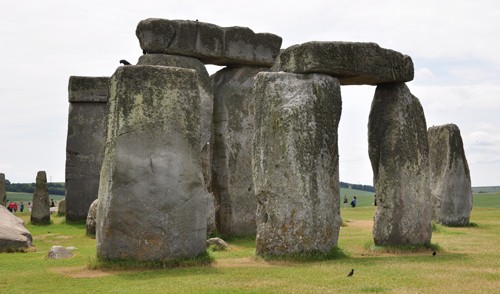
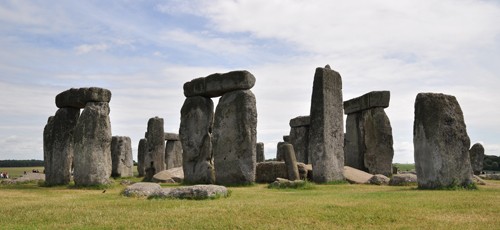
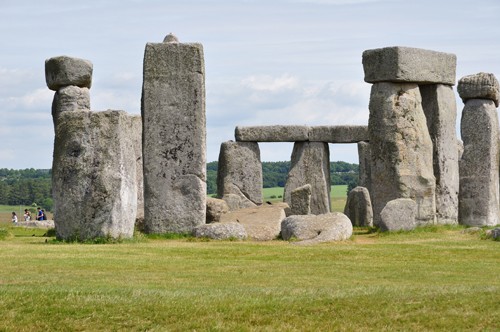

All the other photos above were thanks to Anders’ zoom lens…this one gives you more of the feeling of how far we actually were from the stones.
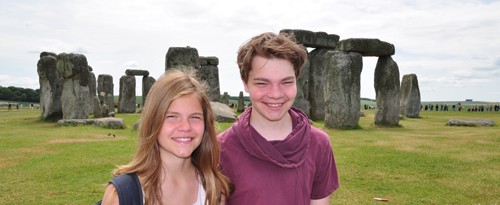
Once we had perambulated the entire circumference of the site, there wasn’t much left to do but hit the gift shop and the refreshment stand before hopping back on the bus. I wasn’t disappointed, exactly, but even the proximity didn’t do much more for me than looking at this series of photographs might have done for you.
The next stop was Old Sarum, and I was glad to learn it was a lot more interesting than my cursory reading had led me to believe. Old Sarum is the original site of what is now Salisbury. It was moved to its present location in 1219 and the hilltop fell into ruin. There had been fortifcations at this strategic spot since probably 3000 BC, so it was in use as far back as when Stonehenge was being built. (photo of model of Old Sarum as it would have looked in the 12th century)
The site was used by the Romans, the Saxons and then the Normans and my interest was considerably piqued upon reading one of the first info boards to realize it was one of the castles (in fact, the first) where Henry II imprisoned his wife Eleanor of Aquitaine. I had just finished reading a book about them not too long before we left on this trip, so suddenly I was looking at everything with new eyes. Old Sarum is only ruins and grass now, but the outlines of the castle walls remain and on the lower hill, the entire outline of the former cathedral gives evidence of its scale and importance. It was a very peaceful, sunny spot. Hard to believe it once was used to hold off marauding Vikings!
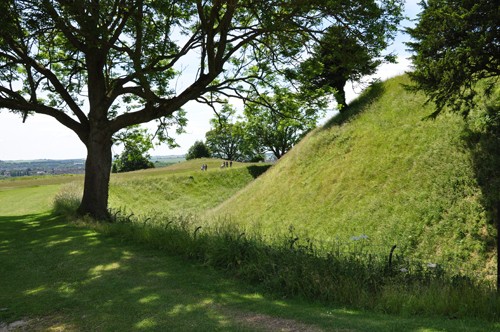
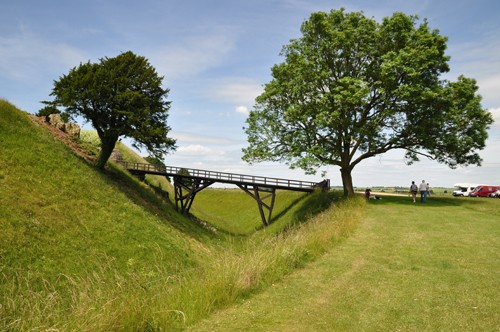

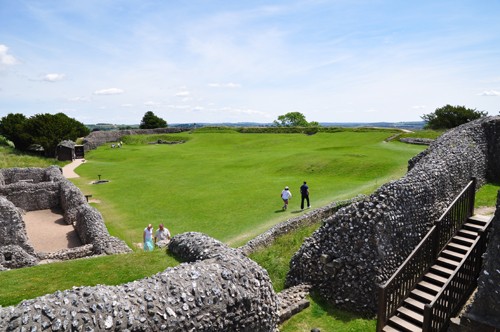
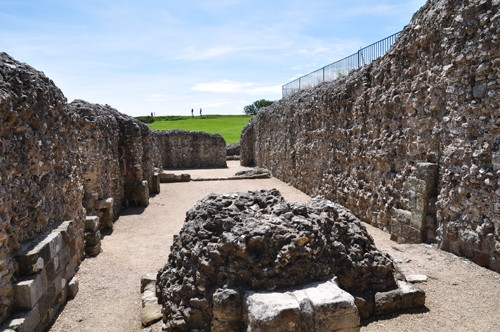
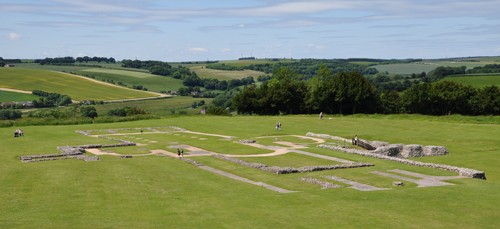
The old cathedral outlines seen from the topmost hill ruins
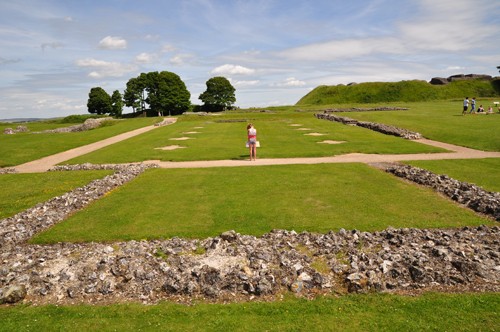
By the time we left Old Sarum it was late in the afternoon. The bus dropped us back off in Salisbury City Center and we walked over to the cathedral. It’s huge and very imposing, even with one side covered in scaffolding (why is it something ALWAYS has scaffolding hiding parts of it when we visit?). It was consecrated in 1258, only 38 years after construction was started and has the tallest church spire in the United Kingdom. It was never bombed during WWII and when German bomber pilots were interviewed after the war, the British discovered that the reason why was that the spire was used by the Germans to orient themselves.
The cathdral also has Britain’s largest close and cloisters and the world’s oldest working clock, as well as the best of the four surviving original copies of the Magna Carta. Unfortunately, we spent the first half hour walking around inside the cathedral and arrived at the chapter house where the Magna Carta is kept, only to find they had closed for the day 10 minutes before. When I showed Martin a replica of the Magna Carta that was in the cathedral gift shop, however, the disappointment disappeared. Boring! What it meant and represented is much more important than how it actually looks. 🙂
Salisbury isn’t the most magnificent cathedral I’ve ever visited but it was full of lovely and ancient things to look at, nonetheless.
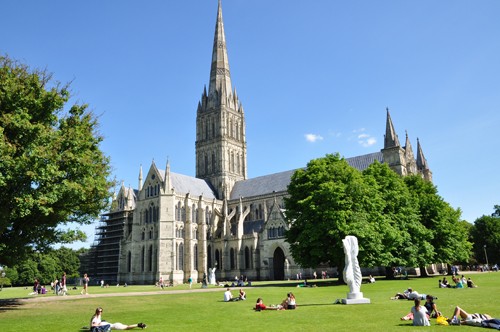



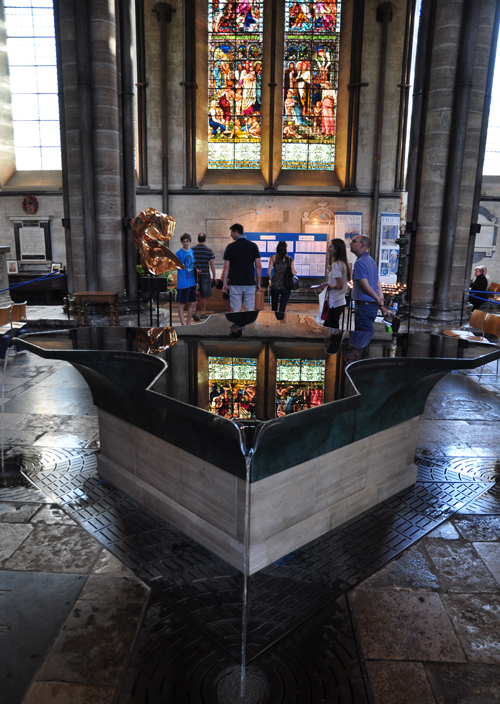

Example of one of the exquisite embroidered kneeler cushions within one of the side chapels


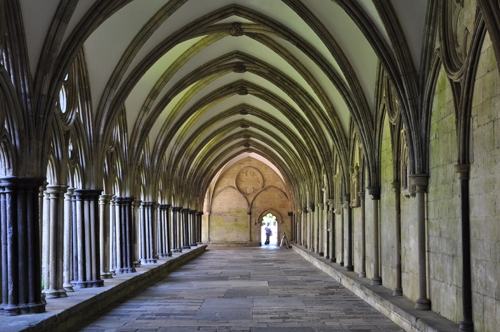

Ek Family portrait in the cathedral close
All in all, a very nice break between the week of boating and our next adventure: 3 days in London!
